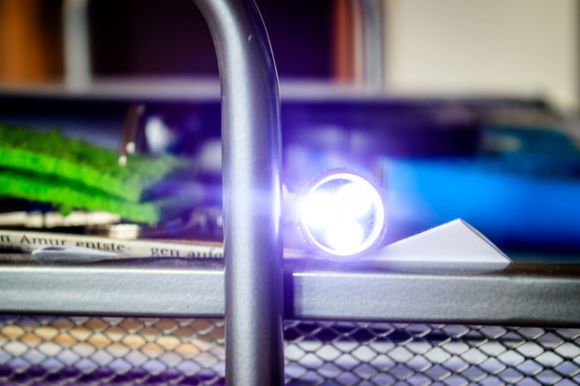
If you’re an aspiring film maker hoping to be the next [J.J. Abram] with a mild (severe?) obsession with lens flares, then this Instructable is for you!
Modern camera lenses are designed to prevent lens flare, but sometimes, just sometimes, you want a cool lighting flare in your video. Of course you could add them in post production, but that’s kind of cheating, and if you don’t have expensive video editing software, not very easy to do either.
Now you could just throw a super bright LED flashlight on set and hope for the best, but you’ll never get that cool Star Wars or Star Trek blinding purple line… unless you add something on your camera to help scatter the light! [Jana Marie] has figured out just how to do that.
She’s taken a filter for her camera and removed the glass element. Some actually come apart with a few small screws, but if not, you may have to carefully break the glass to get it out. Once you have a glass-less filter that can be attached to your camera, you need to add a vertical strip to it, which will cause light to scatter horizontally in your image. [Jana’s] using a 3D printed part, but really you could make it from scratch just as easily. It’s as simple as that!
Take a look at the results:















Severe. Definitely a severe obsession.
Look @ the youtube related videos — one called
Creating the fantastically cinematic anamorphic look using the cinemorph filter
Well, the technique is not really that new, it’s been around for years, and in a plethora of variations. I wonder why this particular one made the cut for Hackaday, just because it was 3D printed?
I would think a scratch or physical score on the filter glass would be much more effective. This is how star-4 and star-6 filters work.
Better yet, DIY anamorphic lens using a large prism pair.
I have tried building an anamorphic lens out of prisms and it ends up being incredibly heavy. The only affordable wedge prism which are large enough are trophy prisms and these don’t have a sharp enough angle. I needed to use 4 of these prisms and the whole thing ended up weighing about 5 ~ 6kg (10 ~ 12 pounds) on it’s own (no camera).
DIY prism anamorphic lenses are fine for projectors, as they don’t need to be portable and quite hefty brackets can be used to hold it up.
>and if you don’t have expensive video editing software
You download one from torrents. In Europe you won’t be arrested for that.
Or learn to use GIMP which has for many versions had a rather considerable, if a bit hard to use, clip editing multi-channel capability.
*Blender…..no idea why I said GIMP. They’re not even the same medium. Ugh
today when i did not have a 7.9 v power supply for my inherited SDR-20 camera i made one imagine that SHOULD BE AN ARTICLE ABOUT IT ON HERE!!!
Sarcasm!.
Or you could instead use a cheap periscope-lens design camera that already exhibits terrible lens-flare (most of which are also waterproof). Such as the Canon D20. Or get an even older one with a CCD sensor and also get vertical purple bars around the highlights aswell!
Kudos for the harvested 18650 cells though.
I remember the old trick in 35mm photography was to use a piece of window screen across the filter to get the star point flares.
I trick I heard was to rub your finger across the lens to leave a smear. That makes a flare perpendicular to the smear.
Just what we need, a post sponsored by J.J. Abrams.
Michael Bay feels left out. Oh well, he’ll just resort to more explosions to make him feel whole.
I’ve made one before, using some pitcher frame glass and sandpaper. All you do is make thin vertical marks, and your done.
tip for making lens flares: don’t